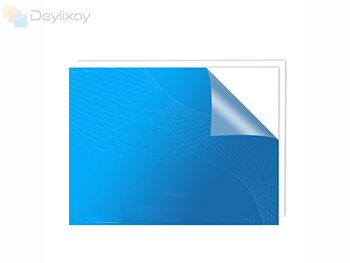간판 프로젝트에 이상적인 아크릴 시트 두께를 선택하는 것은 미적 측면, 기능성, 구조 공학의 교차점에 있는 중요한 결정이며, 이는 간판의 즉각적인 시각적 영향뿐만 아니라 의도된 환경에서의 수명과 탄력성에도 큰 영향을 미칩니다. 눈부신 투명도, 광택 마감 및 탁월한 내구성으로 유명한 아크릴은 간판 업계의 초석 소재가 되었지만 그 성능은 선택한 시트의 두께에 따라 크게 좌우됩니다. 두께가 부족하면 간판이 허술해 보이고, 바람에 흔들리고, 갈라지거나 휘어지기 쉬우며, 지나치게 두꺼운 패널은 견고함에도 불구하고 불필요한 무게를 가중시키고, 설치 과정을 복잡하게 하며, 그에 상응하는 이점을 제공하지 못한 채 프로젝트 비용을 부풀리게 합니다. 이 결정을 내리려면 간판의 크기, 장착 방법, 위치 등 여러 주요 요소에 대한 사려 깊은 분석이 필요하며, 간판이 내부 부티크 창에 사용할 것인지 외부 외관에 사용할 것인지 등 요소에 맞서야 합니다. 보편적인 대답은 없지만 각 특정 용도에 대한 최적의 범위가 있으며 이러한 변수 간의 관계를 이해하는 것은 전문적이고 효과적이며 지속적인 간판을 만드는 데 필수적입니다.

일반적으로 요구 사항이 덜 엄격한 내부 간판 응용 분야의 경우 더 얇은 아크릴 시트가 일반적으로 적절하고 경제적으로 유리합니다. 탁상 디스플레이, 메뉴 홀더, 세련된 사무실 디렉토리, 작은 벽걸이 명판과 같은 간판은 주로 풍하중과 악천후가 없는 통제된 환경에서 작동합니다. 이러한 맥락에서 3mm(약 1/8인치)에서 5mm(약 3/16인치) 범위의 두께가 가장 일반적입니다. 3mm 시트는 뛰어난 선명도와 경량 구조를 제공하므로 간헐적으로 취급되거나 크기가 작은 간판에 적합합니다. 이는 재료 비용을 낮게 유지하면서 더 작은 크기에서 눈에 띄는 휘어짐을 방지할 수 있을 만큼 충분한 강성을 제공합니다. 예를 들어 더 큰 방향 표지판이나 몇 피트에 달하는 백라이트 패널과 같이 표지판의 크기가 증가하는 경우 5mm 두께로 이동하는 것이 좋습니다. 이 추가 밀리미터 반의 재료는 견고성을 크게 향상시켜 지나치게 복잡한 지지 프레임 없이도 표지판이 완벽하게 평평하고 안정적으로 유지되도록 보장합니다. 5mm 시트의 실질적이고 고급스러운 느낌은 더 높은 품질에 대한 인식에 기여하며, 이는 리셉션 공간이나 소매 공간의 기업 브랜딩에 특히 바람직합니다. 대부분의 인테리어 목적의 경우, 디자인이 상당한 깊이의 특정 미학을 요구하거나 매우 크고 독립된 요소를 포함하지 않는 한 5mm를 초과하는 것은 거의 필요하지 않습니다.
외부용 간판을 디자인할 때 미적분학은 극적으로 변합니다. 옥외 간판은 풍압, 온도 변동, 잔해로 인한 잠재적 영향, 때로는 파손 행위까지 포함한 다양한 환경 문제를 해결해야 합니다. 결과적으로, 간판이 시간이 지남에 따라 이러한 힘을 견딜 수 있도록 필요한 두께가 증가합니다. 건물 정면이나 기둥 꼭대기에 장착되는 것과 같은 중소형 외부 간판의 경우 최소 두께 5mm가 절대적인 시작점이며, 8mm(약 5/16인치)가 훨씬 더 안정적이고 일반적인 선택입니다. 8mm 두께는 지속적인 바람 하중 하에서 휘어짐을 효과적으로 방지하는 견고한 플랫폼을 제공하여 장착 지점에서 피로 균열 위험을 줄입니다. 옥외 간판의 크기가 커지면 두께도 커져야 합니다. 소매점, 쇼핑 센터 또는 주요 길가 식별자와 같은 대형 옥외 표지판에는 거의 보편적으로 두께가 10mm(약 3/8인치)~15mm(약 1/2인치) 이상인 아크릴 시트가 필요합니다. 이러한 견고한 패널은 넓은 표면적에 걸쳐 바람이 밀고 당기는 힘에 저항할 수 있는 고유한 강도를 가지고 있습니다. 또한, 두꺼운 시트는 본질적으로 우박이나 우발적인 접촉으로 인한 충격에 대한 저항력이 더 높으며 이는 수명과 안전을 위한 중요한 고려 사항입니다. 물론 이러한 견고한 간판의 장착 시스템은 종종 맞춤형 알루미늄 또는 강철 프레임워크와 관련된 두꺼운 아크릴의 상당한 무게를 지탱할 수 있도록 설계되어야 합니다.
단순한 크기와 위치를 넘어 특정 유형의 표지판이 최고의 두께를 결정하는 데 중요한 역할을 합니다. 예를 들어 독립형 A 프레임 또는 받침대 표지판은 지렛대의 영향을 받으며 안정성을 유지하려면 매우 견고해야 합니다. 흔들리는 것을 방지하기 위해 일반적으로 스펙트럼의 더 두꺼운 끝, 종종 10mm 이상이 필요합니다. 반대로, 벽이나 폼 보드와 같은 견고한 기판에 접착된 간판과 같이 뒷면 전체에 걸쳐 완전히 지지되는 간판은 기판이 기본 구조적 지지를 제공하기 때문에 더 얇은 시트를 활용할 수 있는 경우가 많습니다. 또 다른 중요한 고려 사항은 제조 공정 자체입니다. 얇은 시트는 비용 효율적이지만 전문가의 주의를 기울여 다루지 않으면 절단이나 드릴링 중에 균열이 발생하기 쉽기 때문에 특정 응용 분야에서는 작업하기가 더 어려울 수 있습니다. 두꺼운 시트는 무겁기는 하지만 제작 과정에서 더 관대하며 광택 처리 또는 화염 처리와 같은 보다 정교한 가장자리 마감 처리를 수용할 수 있어 간판의 전반적인 전문적인 외관을 향상시킵니다. 궁극적으로 두께 선택은 성능, 미적 측면, 예산 간의 균형을 맞추는 것입니다. 경험이 풍부한 간판 제작업체와 상담하는 것은 항상 신중한 단계입니다. 특정 지역 조건 및 장착 시나리오에서 다양한 두께가 어떻게 작동하는지에 대한 실제 경험을 바탕으로 귀중한 통찰력을 제공하여 아크릴 간판이 시각적으로 인상적일 뿐만 아니라 오래도록 제작될 수 있도록 보장할 수 있기 때문입니다.
 English
English Español
Español Portugues
Portugues Pусский
Pусский Français
Français Deutsch
Deutsch 日本語
日本語 العربية
العربية Italiano
Italiano Nederlands
Nederlands Ελληνικά
Ελληνικά Svenska
Svenska Polski
Polski ไทย
ไทย Türk dili
Türk dili हिन्दी
हिन्दी Indonesia
Indonesia Melayu
Melayu Tiếng Việt
Tiếng Việt dansk
dansk Magyar
Magyar қазақ
қазақ বাংলা
বাংলা עִברִית
עִברִית မြန်မာ
မြန်မာ українська
українська norsk
norsk Gaeilge
Gaeilge Română
Română ພາສາລາວ
ພາສາລາວ Filipino
Filipino Suomalainen
Suomalainen slovenský
slovenský o'zbek
o'zbek Igbo
Igbo Hrvatski
Hrvatski Zulu South Africa
Zulu South Africa Afrikaans isiXhosa
Afrikaans isiXhosa lëtzebuergesch
lëtzebuergesch тоҷикӣ
тоҷикӣ नेपाल
नेपाल Eesti
Eesti Yoruba
Yoruba Монгол
Монгол ខ្មែរ
ខ្មែរ 中文(繁体)
中文(繁体) Afrikaans
Afrikaans












 핸드폰
핸드폰
논평
(0)